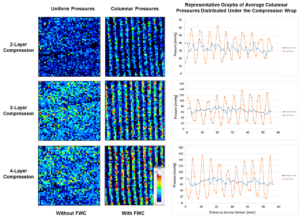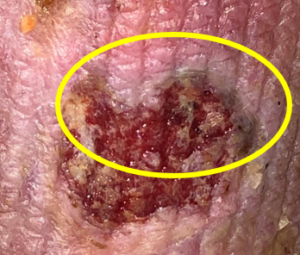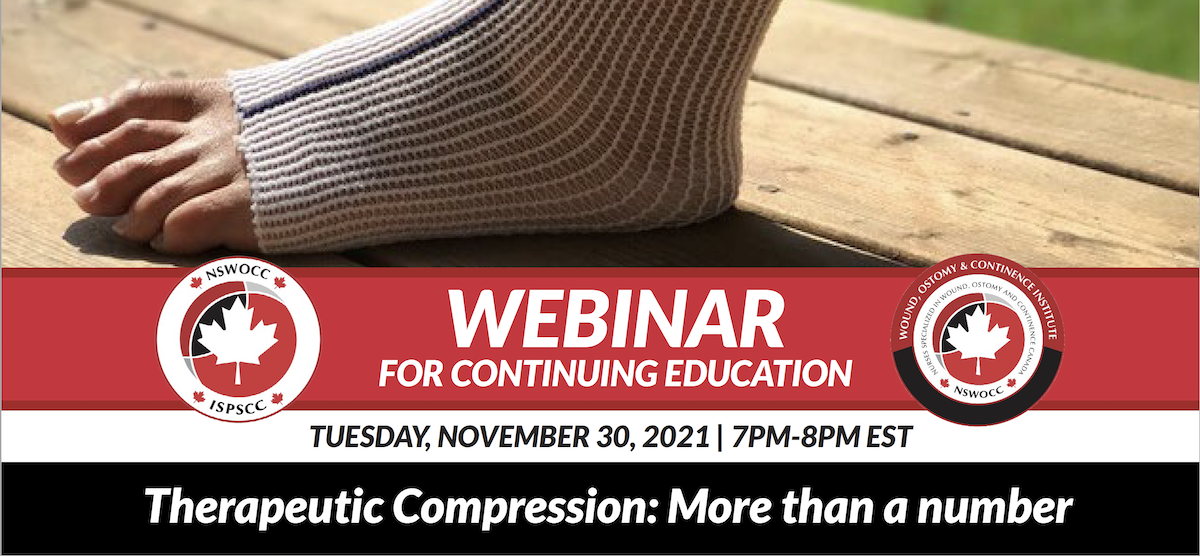Upcoming webinar with Dr Suzie Ehmann – More than a number
Quart Medical continues its webinar series with Dr. Suzie Ehmann, DPT, CWS, CLT-LANA presenting on Therapeutic Compression: More than a number.
Compression therapy is a cornerstone in the management of venous disease and lymphatic disorders, including chronic venous insufficiency, venous leg ulcers, and lymphedema. Measurement of mmHg compression provides one indicator of performance; however, this is just the beginning. Compression science looks at pressure changes as well as pressure distribution patterns to provide additional insight into the multiple factors that work together to improve circulatory function.
This November 30 educational webinar for NSWOCs has the following educational objectives:
- describe the impact of compression modalities on edema, lymphedema, and lower extremity wounds
- illustrate the impact of different compression textiles on therapeutic outcomes; and
- utilize compression science to formulate optimal compression options to maximize patient compliance.
The physiological effect of compression
The physiological effects of compression can be observed over five parameters: lymphatic; venous; arterial; inflammatory/trophic changes; and clinical symptoms. As a certified lymphedema therapist author and frequent symposium presenter Dr. Ehmann expands our working knowledge of how the many facets of compression interact to positively impact lymphedema, edema, and the healing of chronic lower extremity wounds to:
- reduce the accumulation of excess interstitial fluid by opposing fluid filtration;
- redistribute fluid to uncompressed areas with functional lymphatics;
- increase lymphatic reabsorption, stimulate lymphatic contractions, and increase lymphangion function; and
- enhance muscle pump efficacy.

Dr. Ehmann will focus on the lymphatic component of circulatory impairments and relate how combinations of products can be utilized to enhance the effects of compression, including in concert with multi-layer compression wraps. Over the last 20 years, Suzie has dedicated her practice to the evaluation and comprehensive treatment of patients with lymphatic disorders and chronic nonhealing wounds. She has a focused interest on the science of compression and the impact of edema management on restoring function, mobility, and quality of life. She is pursuing her PhD with a focus on the impact of alternating compression profiles and enhancements. Her full biography can be found here.
More than a number
The figure below presents data from the Ehmann et al. (2020) paper in Wounds presenting pressure maps and graphs that columnar pressure distribution with and without EdemaWear [FWC] beneath 2, 3 and 4-layer compressive wrapping systems.

Read the abstract of her paper here in advance of the webinar on November 30.
The image below shows a clinical example of the linear pattern observed from the incorporation of EdemaWear under a multi-layer compression system.

This More than a number webinar includes a question and answer segment to provide the opportunity for you to dig deeper into the benefits for Canadian patients in need of compression. We are delighted to partner with NSWOCC and WOC Institute to bring you this educational webinar.
Register for the webinar on November 30 here
Reference
Ehmann, S., Walker, K. J., Bailey, C. M., & DesJardins J. D. (2020). Experimental Simulation Study to Assess Pressure Distribution of Different Compression Applications Applied Over an Innovative Primary Wound Dressing. Wounds, 32(12), 353-363.
Images reproduced with permission of Suzie Ehmann




